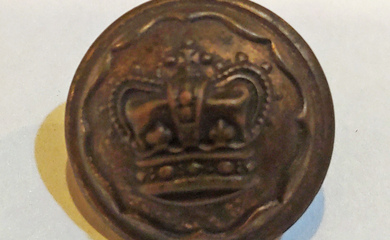What does treasure hunting and CARE, Children And Residential Experiences: Creating Conditions for Change, a multi-level program aimed at improving services, have in common? More than you may think.
Job coach Wade Hebig has worked at Ranch Ehrlo for 19 years. For fifteen of those, he was on the residential side of the agency at MacKay House. Several years ago, Wade was on a camp trip with the boys from MacKay and had one participant he described as “very inquisitive, and into everything.”
“He would look everywhere for pirate treasure and dropped coins,” Wade recalled.
 Wade saw this interest as a way to build a relationship, a hallmark of CARE, with the client and purchased a metal detector to use with the youth.
Wade saw this interest as a way to build a relationship, a hallmark of CARE, with the client and purchased a metal detector to use with the youth.
While that particular youth surprised Wade with a lack of interest, he himself was soon hooked on the hobby. When he began working on the education side of the agency as a job coach four years ago, he brought his hobby to the participants he works within the Supported Employment Program (SEP).
“One of their favourite things to do is go out and look for loonies and toonies. They’ll spend hours looking, and if they find one, they go to the dollar store with it.”
But Wade himself recently dug up a much more interesting find – a button that looks exactly the same as that of the ones found on coats gifted to the chiefs of Treaty 4 from the Crown in 1874. After some more research, Wade was told that the front of the button is identical, but the back has some key differences, possibly debunking the theory.
Still, the button has historical significance.
“Nobody has given me a definitive answer. Chances are, back in the 1800s when the Treaty was signed, there were 100 red coat soldiers that came down to sign the treaties and they all had 50 of those buttons on their coats – so it could’ve fallen off that. But they were also made in bulk, so some lady could’ve bought some in the early 1900s and sewed them on every jacket and it fell off then.”
“It’s more than likely not from a Treaty Coat. The theory was that it could be. But it still comes from that time frame,” Wade explained.
“It’s rare, but it’s not impossible to find.”
Wade plans to donate the button to the museum in Fort Qu’Appelle and will continue with his hobby, both on his own and with participants at SEP.


